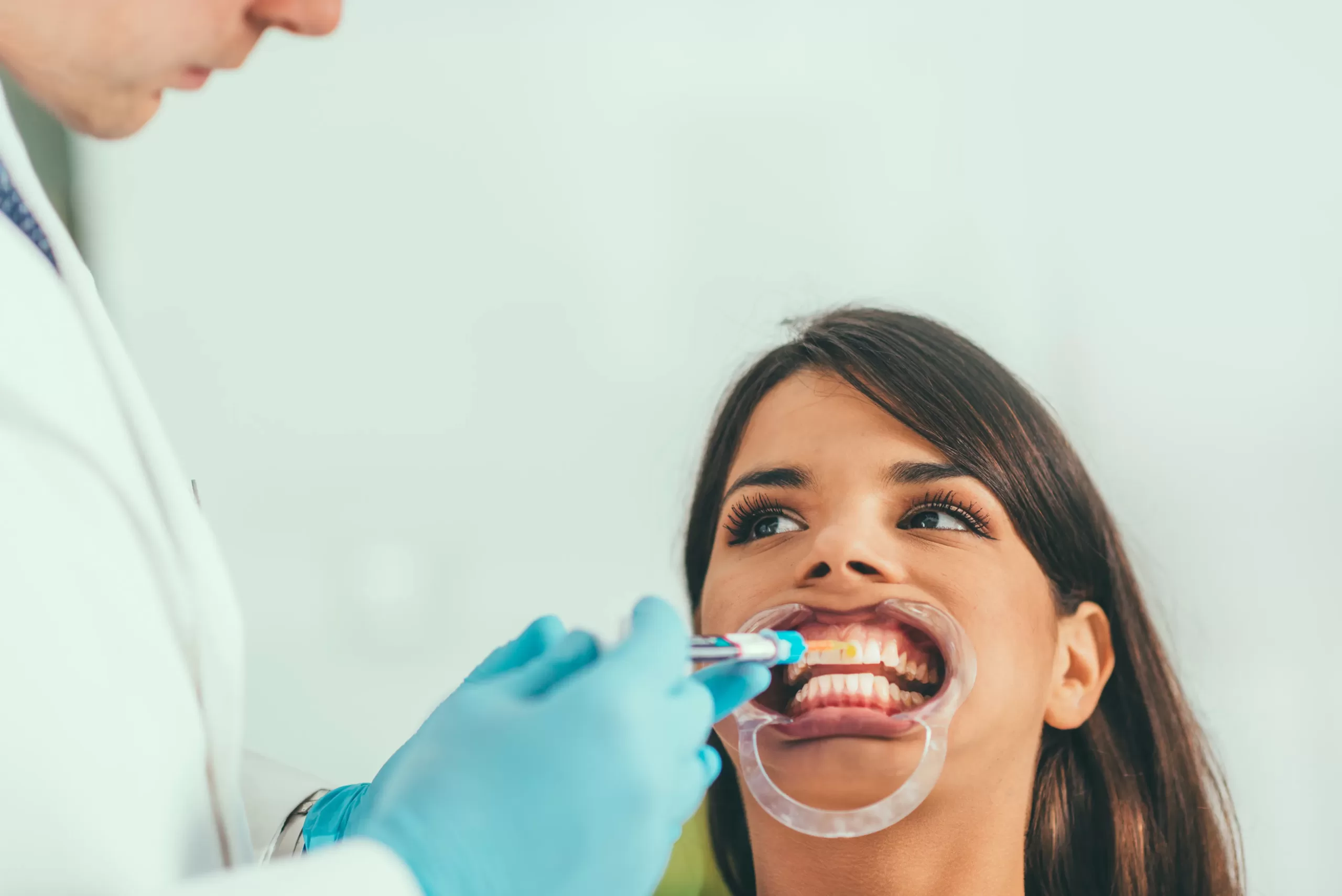Whitening products for teeth can help make you shine with confidence by brightening up your smile and diminishing any discolorations caused by food, beverages and medications. Selecting the appropriate product depends on what kind of whitening you need and desired results.
Whitening gels contain peroxide-based bleaching agents and should be applied twice daily over 14 days for maximum effect, typically lightening teeth by one or two shades.
Peroxide
Many people turn to hydrogen peroxide for home tooth whitening, such as toothpaste or mouthwash containing hydrogen peroxide as well as strips and gels designed to squeezed into rubber trays to whiten teeth. Hydrogen peroxide’s long history of safety makes it effective at lifting stains off enamel surfaces while simultaneously soothing gum inflammation; however, misuse may damage its impact, so before undertaking whitening at home on your own it would be prudent to visit a dentist first.
Many teeth discolorations issues are the result of stains on the enamel of each tooth, which become increasingly difficult and stubborn to remove over time. There are various strategies available for preventing or reversing discoloration such as using whitening agents, avoiding certain foods and beverages, practicing good dental hygiene and not smoking; but this may not always completely erase stains, leaving unevenly-toned teeth behind.
Hydrogen peroxide is a mild liquid antiseptic often used to disinfect minor cuts and wounds, treat acne or thrush symptoms and whiten teeth. You might already have this brown bottle sitting in your medicine cabinet; however, for safe application on teeth it must first be diluted properly prior to being applied directly.
Swishing around the mouth for one to two minutes before rinsing thoroughly. Additionally, this solution can also be mixed with baking soda and left on teeth for several minutes to form a paste before being rinsed away with water. As high concentrations may damage enamel, small doses should be used when using hydrogen peroxide solutions.
Many over-the-counter whitening treatments contain hydrogen peroxide and can be purchased from drug stores or pharmacies, although their concentrations tend to be much higher than what’s typically found at home (3% peroxide is usually recommended). Furthermore, treatment timeframe may only last several minutes per day over several days or weeks and will need refreshing periodically – thus rendering any results temporary and needing to be repeated from time to time.
Bleach
Teeth bleaching (commonly referred to as bleaching) involves either physically removing stains from teeth or chemically dissolving them using bleaching products that contain peroxide, which work by oxidizing dark pigment molecules within tooth enamel and lightening its color through chemical oxidation; two such peroxide products include hydrogen peroxide and carbamide peroxide; both products can be found both at home and at dentist offices as whitening treatments; however, professional versions typically feature higher concentrations of active ingredients than their counterparts do.
Whitening products range from simple cleansers and rinses available at stores to professional strength whitening gels, strips and laser treatments provided in dentist offices. Many of these items work by clearing away surface stains on enamel of teeth for a shiny and brightened smile; following manufacturer’s directions usually twice daily can extend this effect and keep teeth sparkling white for weeks after.
Some stains caused by food and medications like tetracycline cannot be removed using any whitening method; crowns or fillings may even not respond at all to bleaching. While whitening will change the shade significantly, expect it to do so over time.
Over-bleaching with over-the-counter products that contain high levels of peroxide may lead to the enamel being worn away, leading to increased sensitivity in teeth and gums. You should only use such products according to the advice of your dentist or physician.
Professional teeth whitening by a dentist offers the most effective whitening treatment, beginning with an initial examination and cleaning to make sure it’s safe for you. This procedure may produce more dramatic and longer-lasting results; though you may require touch-up whitening with over-the-counter products for maintenance of their results – though these typically contain lower concentrations of whitening agents which don’t offer dramatic transformation.
Whitening toothpastes
Whitening toothpastes are designed to tackle surface stains and discolorations that accumulates over time on teeth. They typically include bleaching agents such as hydrogen peroxide, as well as mildly abrasive ingredients that are strong yet gentle enough not to damage enamel, according to Dr. Salman. When selecting your whitening toothpaste, be sure to look for one with the American Dental Association’s (ADA) seal of acceptance; this indicates the product has been evaluated by an expert panel comprised of dentists and scientists to ensure its safety and efficacy.
White toothpastes typically include abrasive ingredients that are both powerful and gentle enough not to damage enamel, according to dentist Dr. Marsel. Baking soda, an all-natural abrasive which scrubs away stains naturally, may also be found in some whitening toothpastes; others contain silica (found in most forms of sand) or hydrated silica; some even incorporate phosphoric acid – an antibacterial natural cleanser known for eliminating hardened plaque – for effective cleaning action.
The American Dental Association cautions that whitening toothpastes and strips should not be used to permanently alter the color of your teeth; only professional in-office treatments are capable of doing that. Furthermore, overusing such products may damage oral microbiomes, result in enamel erosion, and increase tooth sensitivity.
Some whitening toothpastes make promises such as “jumping you ten shades lighter in three weeks,” but this goal is unrealistic for the average person, according to Stellar Smile Center founder Dr. Sibel. Even if using these whitening products, you should still brush twice daily for two minutes each time, in order to reduce risk of cavities and keep gums healthy.
Tom’s of Maine offers an effective yet chemical-free whitening toothpaste option, according to Gonchar. This solution features silica as a gentle abrasive to help remove external stains while its potassium nitrate desensitizer and sodium fluoride protection work wonders in keeping teeth free from decay – two qualities Gonchar and Tornatore both recommend for their patients who want a safer alternative than bleaching strips found at stores.
Mouthwash
Mouthwashes designed specifically to whiten teeth and freshen breath are available, with ingredients to kill bacteria and prevent gum disease as well as fluoride for tooth decay protection. Before beginning use of mouthwash as part of an effort to brighten your smile, however, always consult with a dental hygienist or dentist first.
Dependent upon the severity of your discoloration, whitening mouthwash may provide some help, though other solutions (like toothpastes or bleaching strips/trays/pens) will likely need to be employed alongside it for maximum effectiveness.
Whitening mouthwash poses several potential threats to enamel. Whitening rinses typically contain hydrogen peroxide, an effective bleaching agent but containing too much can damage enamel; in addition, alcohol is often included, leading to dry mouth and eventually leading to tooth decay.
Choose a mouthwash without harsh chemicals like triclosan, sodium lauryl sulfate and artificial sweeteners; in particular avoid those containing chlorhexidine or Cocamidopropyl betaine as these have been known to trigger contact dermatitis allergic reactions in some individuals.
Some mouthwashes include more than just whitening ingredients; in addition to anti-inflammatory and antioxidant agents that may soothe the mouth and neutralize free radicals that lead to staining and ageing of teeth.
PerioSciences whitening mouthwash contains an anti-inflammatory formula with natural antioxidants to fight tooth decay and freshen breath, microminerals from grapefruit seed extract to polish teeth, remove surface stains and polish to polishing off surface stains as well as Hesperetin, an extract of citrus fruit which strengthens teeth to resist staining from foods and beverages.
Whitening mouthwash can be an invaluable addition to your regular brushing and flossing regimens, providing extra whitening power and giving your smile a boost! Plus, with far fewer chemicals than its whitening toothpaste counterparts or strips, it’s safe for daily use – just follow manufacturer’s instructions when it comes to use!
Disclaimer: The content on this blog is intended for general informational purposes only. It is not a substitute for professional medical advice, diagnosis, or treatment. Always consult qualified healthcare providers for personalized advice. Information regarding plastic surgery, dental treatment, hair transplant, and other medical procedures is educational and not a guarantee of results. We do not assume liability for actions taken based on blog content. Medical knowledge evolves; verify information and consult professionals. External links do not imply endorsement. By using this blog, you agree to these terms.





